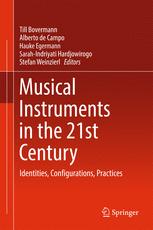

Most ebook files are in PDF format, so you can easily read them using various software such as Foxit Reader or directly on the Google Chrome browser.
Some ebook files are released by publishers in other formats such as .awz, .mobi, .epub, .fb2, etc. You may need to install specific software to read these formats on mobile/PC, such as Calibre.
Please read the tutorial at this link: https://ebookbell.com/faq
We offer FREE conversion to the popular formats you request; however, this may take some time. Therefore, right after payment, please email us, and we will try to provide the service as quickly as possible.
For some exceptional file formats or broken links (if any), please refrain from opening any disputes. Instead, email us first, and we will try to assist within a maximum of 6 hours.
EbookBell Team

5.0
50 reviewsBy exploring the many different types and forms of contemporary musical instruments, this book contributes to a better understanding of the conditions of instrumentality in the 21st century. Providing insights from science, humanities and the arts, authors from a wide range of disciplines discuss the following questions:
· What are the conditions under which an object is recognized as a musical instrument?
· What are the actions and procedures typically associated with musical instruments?· What kind of (mental and physical) knowledge do we access in order to recognize or use something as a musical instrument?
· How is this knowledge being shaped by cultural conventions and temporal conditions?
· How do algorithmic processes 'change the game' of musical performance, and as a result, how do they affect notions of instrumentality?
· How do we address the question of instrumental identity within an instrument's design process?
· What properties can be used to differentiate successful and unsuccessful instruments? Do these properties also contribute to the instrumentality of an object in general? What does success mean within an artistic, commercial, technological, or scientific context?